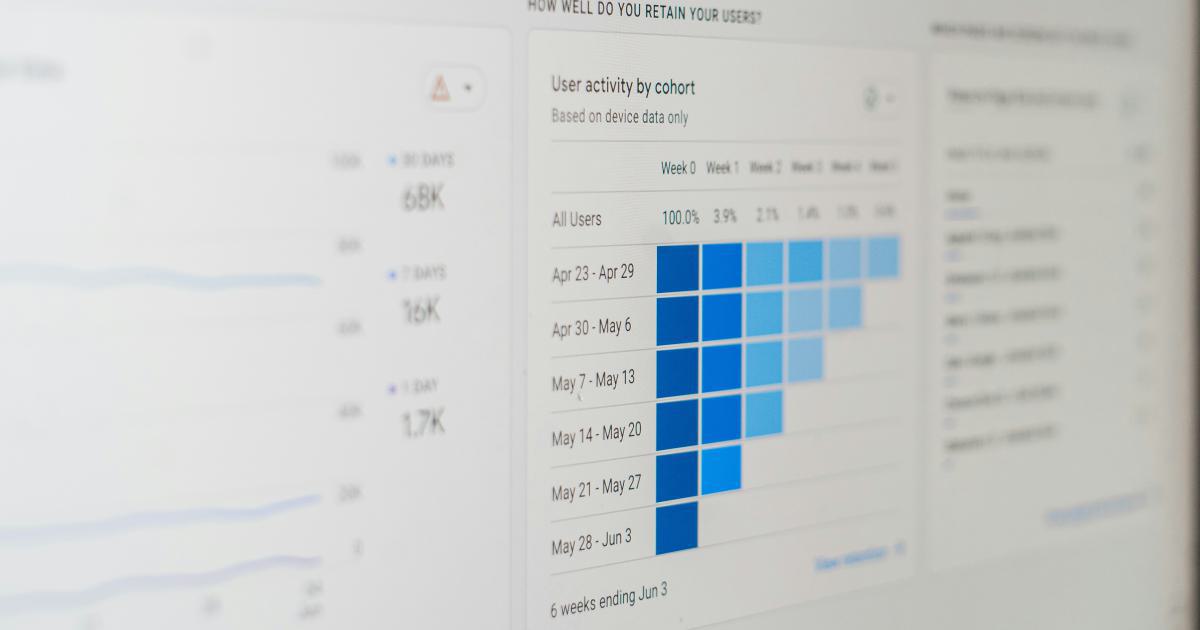Leveraging Competitor Link Analysis for Link Building


Understanding the Power of Competitor Link Analysis
In the world of digital marketing, building a strong link profile is crucial for improving a website's search engine optimization (SEO) and driving more organic traffic. One of the most effective strategies for link building is to analyze the link profiles of your competitors and leverage that information to inform your own link-building efforts.
Competitor link analysis involves examining the websites, pages, and content that your competitors are linked to, as well as the quality and relevance of those backlinks. By understanding your competitors' link-building strategies, you can identify opportunities to replicate their success, fill in the gaps in your own link profile, and ultimately outrank them in search engine results.

The Benefits of Competitor Link Analysis
Leveraging competitor link analysis for link building can provide a range of benefits, including:
Identifying High-Value Link Opportunities: By examining the types of websites and content that your competitors are linked to, you can uncover potential link-building opportunities that may be relevant and valuable for your own website.
Understanding Effective Link-Building Strategies: Analyzing your competitors' link-building tactics can give you insights into the strategies that are working well for them, enabling you to adapt and improve your own link-building efforts.
Outranking Competitors in Search: By building a stronger, more diverse link profile than your competitors, you can improve your website's position in search engine rankings, ultimately driving more organic traffic and potential customers.
Avoiding Undesirable Link Profiles: Competitor link analysis can also help you identify and avoid link-building tactics that may be considered spammy or unethical, which could result in penalties from search engines.
Gaining Valuable Industry Insights: The process of analyzing your competitors' link profiles can provide you with a better understanding of the overall industry landscape, trends, and best practices that you can incorporate into your own digital marketing strategy.
Conducting Competitor Link Analysis
To effectively leverage competitor link analysis for your link-building efforts, follow these steps:
1. Identify Your Competitors
The first step in the process is to identify your key competitors – the websites that are ranking for the same or similar keywords that you are targeting. This can be done through a combination of keyword research, search engine results page (SERP) analysis, and industry knowledge.

Once you have a list of your main competitors, you can begin the process of analyzing their link profiles.
2. Gather Competitor Backlink Data
There are a variety of tools and resources available that can help you gather and analyze your competitors' backlink data, such as:
- Ahrefs: A comprehensive backlink analysis tool that provides detailed information about the backlinks pointing to a website, including the domain authority, referring page authority, and anchor text.
- Majestic: Another popular backlink analysis tool that offers insights into the quality and strength of a website's link profile.
- SEMrush: In addition to backlink analysis, SEMrush provides data on a website's organic search performance, paid advertising, and content marketing.
- Google Search Console: While not as feature-rich as the dedicated backlink analysis tools, Google Search Console can provide valuable information about the external links pointing to your website.
When gathering competitor backlink data, be sure to focus on the following key metrics:
- Total Backlinks: The total number of backlinks pointing to a website.
- Unique Referring Domains: The number of unique websites that are linking to a given domain.
- Anchor Text: The text used in the hyperlink that points to a website.
- Link Type: The type of link, such as dofollow, nofollow, or sponsored.
- Link Quality: The quality and relevance of the websites that are linking to a domain.

3. Analyze the Competitor Backlink Profile
Once you have gathered the necessary backlink data for your competitors, it's time to analyze the information and identify opportunities for your own link-building efforts. Here are some key things to look for:
a. Identify High-Quality Backlink Sources
Examine the types of websites that are linking to your competitors and assess their quality and relevance. Look for authoritative, industry-relevant websites, as these types of backlinks are generally more valuable for SEO.
b. Categorize Backlink Types
Categorize the backlinks by type, such as dofollow, nofollow, or sponsored. Dofollow links are typically more valuable for SEO, as they pass "link juice" to the linked website. Nofollow and sponsored links can still provide value, but they may not directly contribute to improved search rankings.
c. Analyze Anchor Text
Examine the anchor text used in your competitors' backlinks. This can provide insights into the keywords and topics that their content is associated with, which can inform your own content and link-building strategies.
d. Identify Content and Outreach Opportunities
Look for opportunities where your competitors have secured backlinks from high-quality websites through guest posting, resource pages, or other content-driven strategies. These can serve as a blueprint for your own outreach and content creation efforts.
e. Detect Potential Link Gaps
Identify any areas where your competitors have secured backlinks that you have not, and explore ways to fill those gaps in your own link profile.

4. Develop a Comprehensive Link-Building Strategy
By analyzing your competitors' backlink profiles, you can now develop a comprehensive link-building strategy that leverages the insights you've gained. Here are some key steps to consider:
a. Prioritize High-Value Link Opportunities
Based on your competitor analysis, create a list of the most valuable link-building opportunities, such as industry-relevant websites, resource pages, and guest posting opportunities.
b. Create Linkable Content
Develop high-quality, informative content that aligns with the topics and keywords associated with your competitors' backlinks. This can include blog posts, industry guides, infographics, and other types of content that are likely to attract backlinks.

c. Outreach and Relationship Building
Reach out to the website owners and editors of the high-quality websites that are linking to your competitors. Offer to contribute guest posts, collaborate on content, or provide valuable resources that could be featured on their site.
d. Monitor and Adjust
Continuously monitor your link-building efforts and the changing landscape of your competitors' backlink profiles. Adjust your strategy as needed to maintain a strong, diverse link profile that outperforms your competitors.

Advanced Competitor Link Analysis Techniques
While the steps outlined above provide a solid foundation for leveraging competitor link analysis for link building, there are some more advanced techniques that you can consider:
1. Identifying Broken Link Opportunities
One effective tactic is to look for broken links on your competitors' websites and then reach out to the site owners to offer a replacement link to your own relevant and high-quality content. This not only helps you build new backlinks but also improves the user experience on the linking website.
2. Analyzing Competitor Link Velocity
Tracking the rate at which your competitors are acquiring new backlinks (known as link velocity) can provide valuable insights into their link-building strategies. Sudden spikes in link velocity may indicate the use of tactics like guest posting or link outreach campaigns, which you can then emulate.
3. Exploring Competitive Content Gap Analysis
In addition to analyzing backlink profiles, you can also examine the types of content that your competitors are creating and the topics they are covering. This can help you identify content gaps that you can fill with your own high-quality, linkable assets.
4. Leveraging Topical Authority
When analyzing your competitors' backlink profiles, pay attention to the overall topical relevance and authority of the websites that are linking to them. This can help you identify opportunities to build links from websites that are considered authoritative in your industry, which can provide a significant boost to your own domain's topical authority.

Staying Ahead of the Competition
Leveraging competitor link analysis for link building is a powerful strategy that can help you outrank your competitors in search engine results and drive more organic traffic to your website. By understanding your competitors' link-building tactics, identifying high-value link opportunities, and creating a comprehensive link-building strategy, you can build a stronger, more diverse link profile that ultimately leads to increased visibility and success online.
Remember, the key to successful link building is to focus on quality over quantity. Aim to build relationships with high-authority, industry-relevant websites, and create content that is genuinely valuable and engaging for your target audience. By consistently implementing these best practices and adapting your strategy as needed, you can stay ahead of the competition and achieve lasting SEO success.
Are You Crushing It in Internet Marketing?
Struggling to boost your online visibility and traffic? Semrush is the ultimate platform for digital marketers like you. With powerful SEO tools and competitive data insights, you can optimize your website, content, and campaigns for maximum impact.
Join over 7 million marketers already using Semrush to outrank their competitors, drive more qualified leads, and grow their businesses online. Get started today with a 7-day free trial, and unlock the full potential of your internet marketing strategy.
Unlock the Power of SEO with Semrush
Are you struggling to boost your online visibility and drive more traffic to your website? Semrush has the solution.
Our comprehensive platform offers advanced keyword research, competitor analysis, and SEO audits, empowering you to optimize your content and outrank your competition.